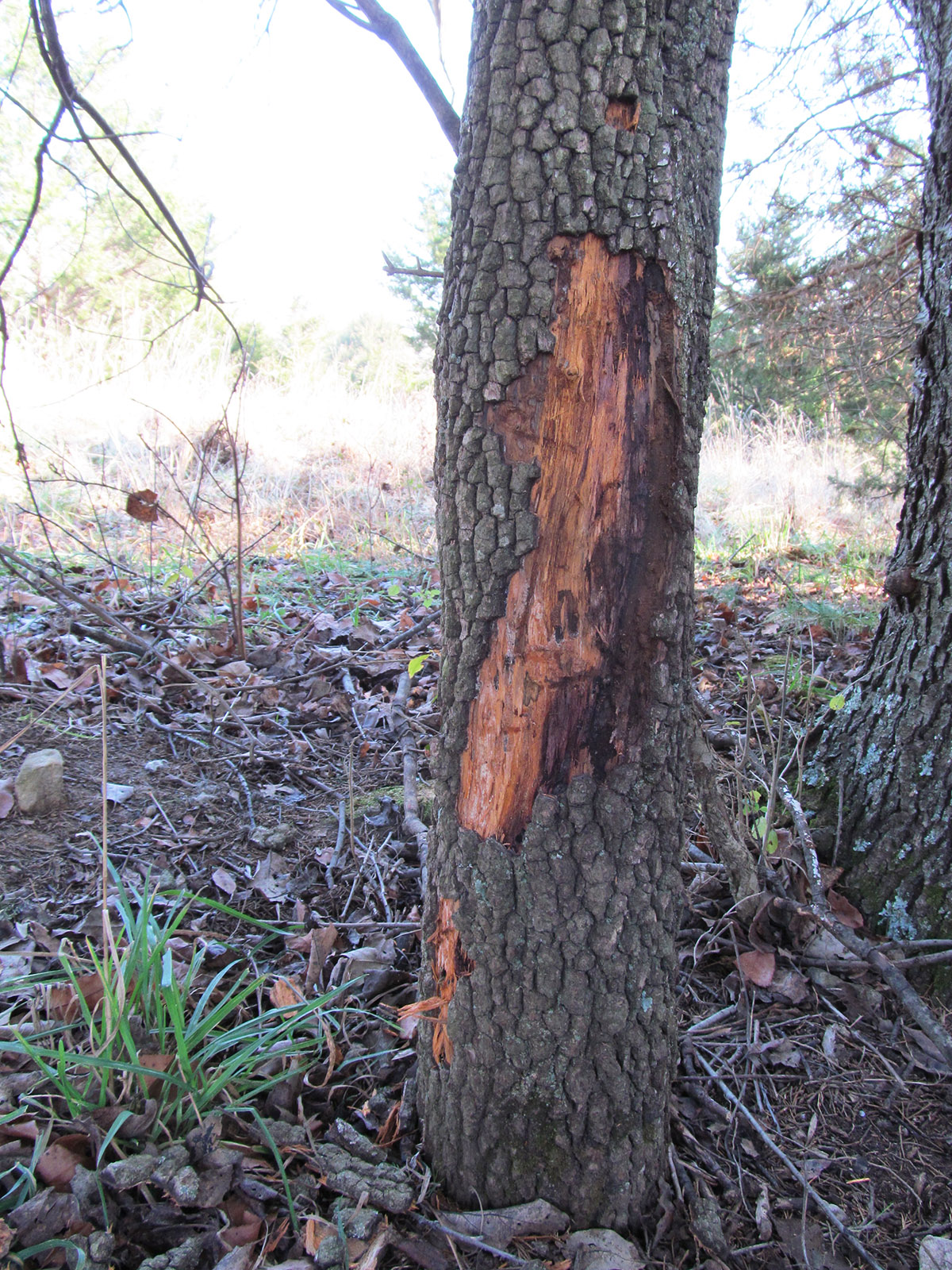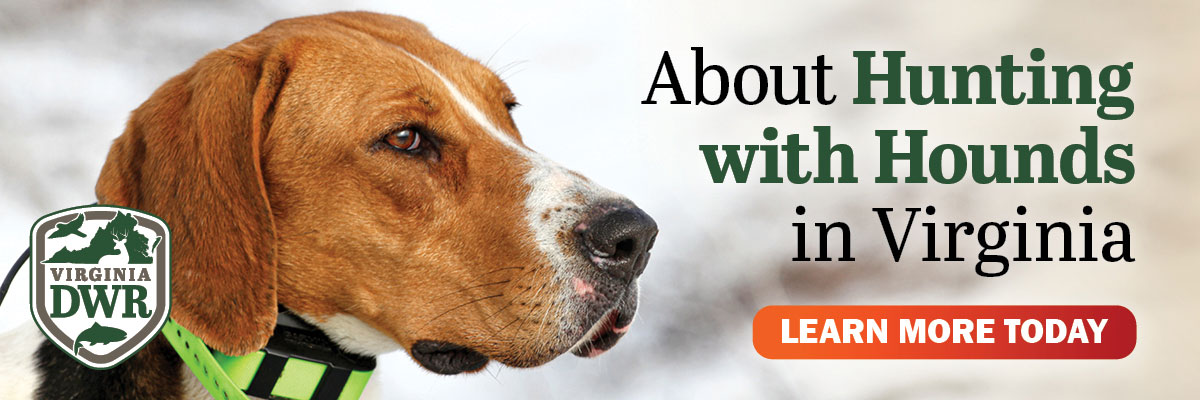By Gerald Almy
Conducting drives and still hunting are enjoyable ways to pursue Virginia’s whitetails, but no method can compare with waiting patiently on stand for a buck to walk into shooting range. This is true both for seeing large numbers of deer and for getting a chance to harvest a mature animal. By hunting from an elevated stand or camouflaged ground blind, you can overcome the deer’s sense of sight (by not moving), smell (by locating it downwind of the animal’s expected approach route), and hearing (by staying still and not making noise that could spook the quarry.)
Elevating yourself above the ground also calls for extra safety precautions. Make sure you review tree stand safety guidelines before choosing your site and setting up your tree stand.
If you can sit tight and exercise patience, a good stand location should pay off over a season’s effort with several shooting opportunities. Here are nine proven stand locations that are worth scouting for this year’s bow, muzzleloader, and firearms seasons.
Rub Lines. This is the sign left where a deer scrapes its antlers against a small tree and removes some of the bark. A single rub is a good place to start scouting. But instead of finding just one or two random rubs, try to locate a line of them, showing a travel route the whitetail used.
Place your stand downwind of this series of rubs either where the tree marks head to feed areas in the evening or back to bedding cover in the morning. Rub lines are particularly good bow hunting locations because they often show a buck’s travel pattern before the rut kicks in.

Finding a line of rubs like these can help you decide on a good stand location. Photo by Gerald Almy
Escape Areas. These are excellent stand sites on areas that are heavily hunted, particularly on opening day of firearms season and weekends. On a recent hunt on G. Richard Thompson Wildlife Management Area, it was barely light on opening day before this type of stand location produced an opportunity for me. (Never mind that I missed!)
A buck’s number one goal is survival; that’s what makes these locations attractive. Once car doors slam, hunters’ voices fill the pre-dawn air and human scent starts entering the woods, bucks of 3 years or older head for a place to be safe. Look for areas such as swamps, dense conifer thickets overgrown with honeysuckle or greenbrier, steep or rugged terrain, and areas far from parking lots or other hunter access points.
Scout out a location at these sites or on the routes deer would use to reach them and set up before first light. You may have to practice a time or two getting to that spot in the dark, so you can do it during the season without disturbing the animals. Also circle wide as you hike to them, so you don’t kick out deer on your way to the stand.
Edge of Doe Bedding Area. Starting around late October or early November, it’s hard to think of a more productive spot than the edge of an area where does loaf and hang out during the day. Bucks will travel between different female family groups searching for the first does coming into estrous.
Set up downwind of these bedding areas. Typically, they are found on a soft knoll or just back in cover from prime feeding locations. Often there will be scattered cedars, pines, tall grasses, weeds, a few saplings, and some honeysuckle.
Look for medium-sized beds in these areas with slightly smaller ones from fawns nearby. Pinpoint fresh droppings, then set up downwind. That’s where bucks will come from to scent check for the pheromones that alert them to a doe ready to breed.
Get into these stand sites early so you don’t spook the does when they come in to settle down after their night’s feeding. You may need to clear an access trail to this site so you can slip in quietly without breaking branches or rustling leaves and busting through briars.
Natural Clearing in Woods. Deer like clearings in mature woods for the edge habitat they provide and the forbs, saplings, and shrubs that offer protein-rich browse.
Bucks also use clearings as posturing areas to see and be seen by does and to establish pecking order among the males in the herd as the rut approaches. Take advantage of this during bow season by setting out a young buck decoy in the clearing to tempt mature bucks out in the open to show their dominance.
Ditch or Depression. In flat country, bucks don’t have ridges or hollows to follow, but they do have ditches. The lower elevation provides security through lower visibility and a natural travel route. These areas are also often wet, nurturing shrubs, forbs, and saplings that offer food and cover to the deer as they move along the ditch.
Set up along depressions connecting bed-to-feed routes early in the season. When the rut approaches, switch to ditches or streambeds between different doe family groups and doe feeding areas.
Active Scrape. The oldest bucks start making scrapes as territorial markings in late September. As the rut approaches, more bucks will join in, making these potentially hot stand sites from opening day of archery season through the pre-rut in black powder season.
Hunt the freshest scrapes you can find, with all leaves cleared from the oval pawed-out area and a large hoof print or several showing. Focus on those with a broken “licking branch” overhead where deer leave scent from their face, nose, and forehead glands.
Lots of scraping activity occurs at night. To circumvent this problem, pinpoint large tracks, rubs, and scuffled leaves showing the route a buck uses to approach the scrape. Then set up 50-100 yards downwind of the scrape along that route to increase your odds for getting a shot during legal shooting hours.
Head of Hollow. Hollows serve as natural travel routes in hilly or mountainous terrain, common throughout the western third of Virginia. Deer typically travel up them in mornings to elevated bedding cover, and then down in late afternoon to food-rich valley floors and stream bottoms. They also cruise along looking for does at pinch points at the top of the hollow during the rut.
Stand hunt near the ravine bottom in the afternoon for deer moving down toward feed areas. Hunt the top of the hollow at daybreak for bucks heading up towards bedding cover or searching for does during the rut. I used this pattern of movement to take my first buck ever, a three-pointer, many years ago on the Massanutten Mountain range in Shenandoah County.
Field and Food Plot Edges. Agricultural fields and food plots attract early-season bucks on a bed-to-feed pattern with nutritious corn, alfalfa, brassicas, soybeans, and clover. During the rut, does feeding in the fields offer additional enticement. The open fields and food plots offer the perfect place to display their racks, attract mates, and challenge other bucks.
The difficult decision in hunting field edges is knowing exactly where to set up. Don’t just sit anywhere on the field. Locate your stand back in cover on the downwind edge of trails leading to corners and points. Does may enter fields anywhere. Points and especially corners are the two key spots bucks will emerge from. Concentrate on those with the most fresh sign.

Water Hole. Deer need water every day. A spot where bucks go to parch their thirst can be a particularly good location in dry, hot weather. It can also be productive during the rut, when bucks travel so hard searching for does that they need to replenish their water supply often.
Find secluded ponds, springs, or streams and look for rubs, scrapes, droppings, and large tracks nearby. Set up downwind in cover before dawn or a few hours before dark. If you can’t locate good watering spots, you can make your own on private property with the landowner’s permission. Use a plastic tub or kid’s swimming pool dug into the ground or dam up a wet-weather stream with sticks and rocks.
Yes, there are other ways to hunt deer in Virginia. But watching from a time-tested stand location near fresh sign offers an enjoyable and relaxing way to ambush an antlered buck or fat doe for the freezer. Chances are, even on days when you don’t harvest an animal, you’ll leave the woods feeling it was an enriching and rewarding experience.


